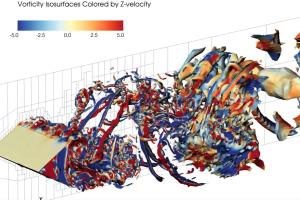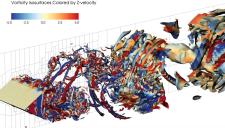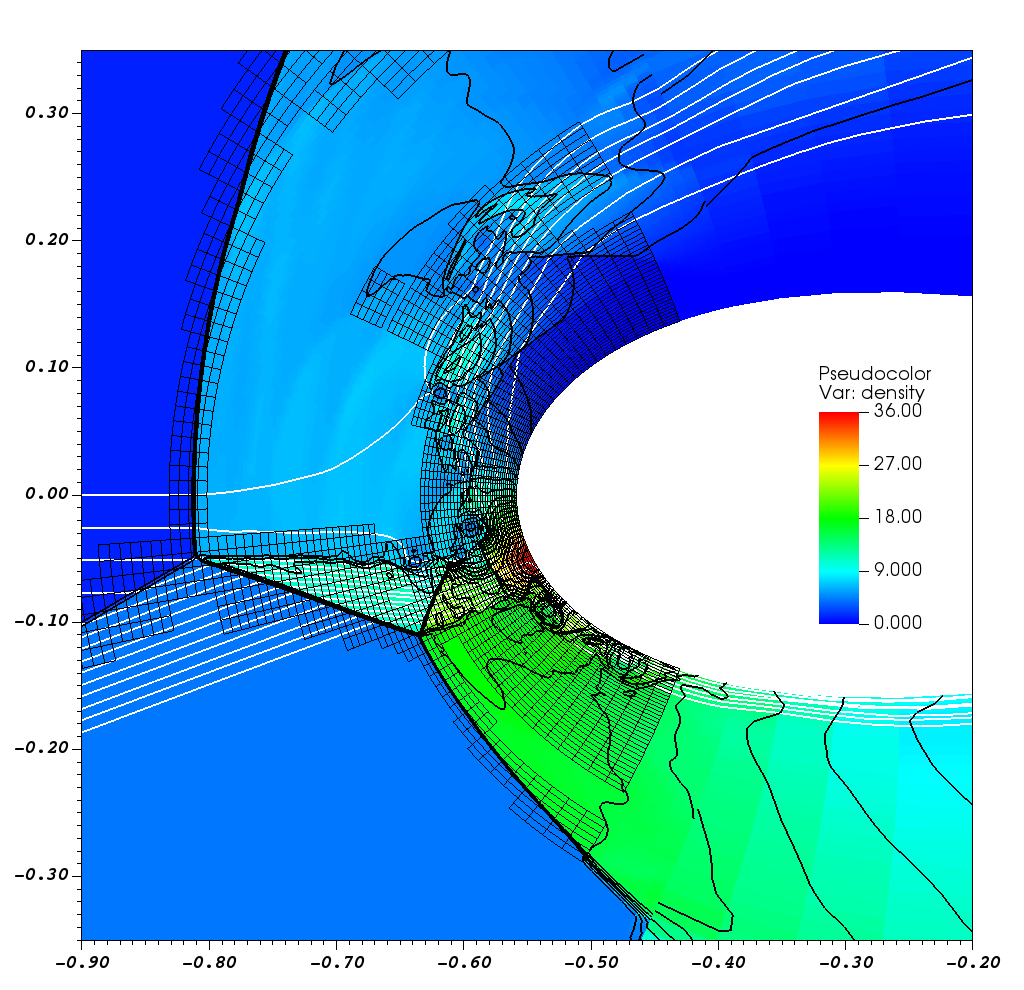
High Performance Computing and Computational Fluid Dynamics (HPC and CFD)
We are dedicated to developing HPC CFD methods for solving complex PDEs, modeling and simulating fluid dynamics-driven aerospace and mechanical engineering devices.A beautiful CFD simulation of complex fluid dynamics is made possible by rigorously translating physics to partial differential equations (PDEs), developing a suite of robust algorithms and implementing them to accurately and efficiently solve these PDEs on discrete space-time domains, while logically representing the configurations for practical engineering, using the state-of-the-art HPC architectures. A HPC CFD researcher needs to make friends with mathematics, computers, physics, and engineering. One must be meticulous, thorough, and detail oriented. One needs patience, perseverance, and stamina. One must be optimistic, when debugging tough bugs.
Our Work



A snapshot from a CFD simulation using Chord, our in-house high-order finite-volume CFD code for predicting a type-4 shock-shock interaction over a blunt body where the boxes are adaptive mesh refinement (AMR) grid boxes without showing the cells.